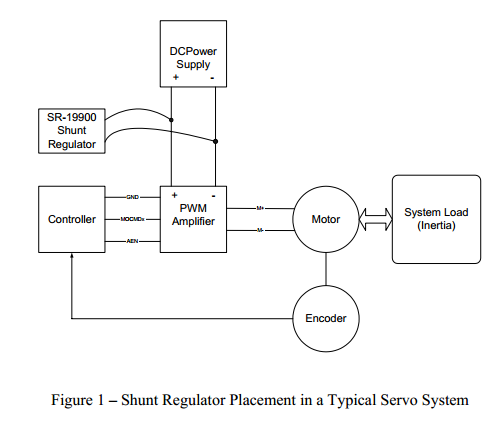A shunt regulator is an electrical device used in motion control systems to regulate the voltage level of the DC bus supply to protect the amplifier, motor, and other components in the system from an over-voltage condition. The bus voltage level can increase if excess energy flows back through the system and charges the capacitor in the power supply above its normal energy level. The shunt regulator operates by sensing the voltage level of the supply, and in the event the voltage level rises above a pre-set threshold, the shunt regulator switches on a resistor to ground that dissipates (as heat) any excess energy that is present in the system. Once the voltage level drops below the threshold (usually a few volts lower than the “on” level), the shunt regulator opens the resistor circuit and operation continues as normal.

For applications requiring a shunt regulator, Galil offers several models that can be configured for varying voltage levels. Three fixed voltage threshold settings are available which are set at either 33, 66, or 90 volts.

